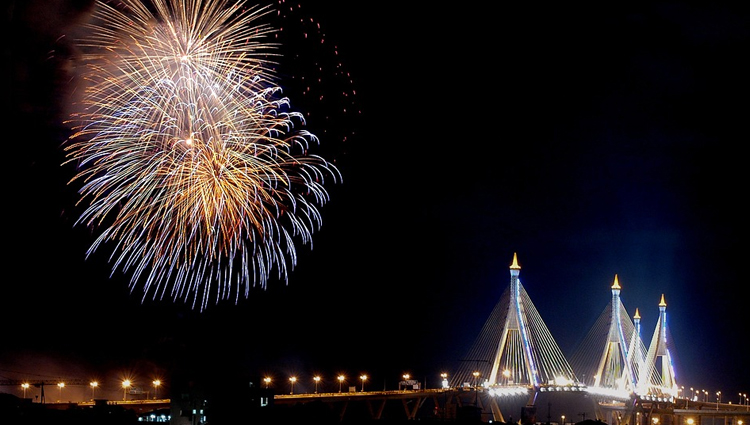Making Green Fireworks 'Greener'

(Inside Science) -- For Philip Butler, a pyrotechnics aficionado with Fireworks by Grucci, the most artistic explosive display this year will be the Grucci Gold Split-Comet, with its record-setting 11-second hang time. The crowds, on the other hand, always love and look forward to the blast that forms a smiley face in the sky, said Butler.
But the same chemistry that makes the crowds "ooh" and "ah" also rains potentially toxic compounds on their heads, so scientists across the globe are helping pyrotechnicians to make their colorful green fireworks even greener for the environment.
The chemical reactions in a firework start with a stream of hot gas released by burning fuel -- a charcoal mixture called "black powder" -- that pushes the rocket upwards. This fuel feeds on oxygen produced by an "oxidizer." At the top of the rocket's path, a second charge of powder ignites and explodes with a hue determined by a "color agent" mixed with the powder.
Green fireworks get their color from the metal barium and burn thanks to the oxidizer perchlorate, the same chemical that NASA puts in the solid rockets used to launch astronauts into space.
When a firework explodes outdoors, it scatters traces of these chemicals into the environment. This year, the snow on New Year's Day in Saalbach, Austria contained 800 times more barium than it did before the previous night's fireworks show. A thousand-fold increase in barium levels was found in the air of an Indian city celebrating the Hindu Festival of Lights, in which families set off their own firecrackers and sparklers. A 2007 EPA study of a lake in Oklahoma found perchlorate levels spiked a thousand-fold, and this contamination lingered for 20 to 80 days.
Whether these amounts pose a health risk to the plants, animals, and people in the affected area remains an unresolved question. In large enough quantities, barium can interfere with the thyroid -- the gland that helps our body to regulate hormones -- and cramp muscles, disrupt heartbeats, and constrict the lungs. Perchlorates can also impair the thyroid and affect fish populations as well -- though the levels found in the Oklahoma lake were about half those that have been conclusively shown to cause these ecological problems.
Until the health risks are definitively determined, experts recommend that people who have respiratory ailments should think twice before sitting underneath the shower of particles released by fireworks. Studies in Hawaii and India showed an increase in the number of asthma cases on the Fourth of July.
Performers in venues that use fireworks regularly are also thought to be vulnerable. In the 1990s Disneyland started to receive complaints from its neighbors in Anaheim, California about the clouds of smoke drifting out from its nightly pyrotechnics show. Subsequent testing showed that metals were building up in local waters, so Disney recruited scientists at the Los Alamos National Laboratory (LANL) in New Mexico to develop fireworks that produce less smoke and contaminants.
"If everything in a firework worked perfectly, you would just make gaseous products like carbon dioxide and nitrogen gas," said LANL chemist David Chavez. But imperfections in the chemical reactions leave a fog of particles that include unburned carbon and crystallized metals such as barium.
To cut down on the smoke, Chavez helped create nitrogen-enriched fireworks that require less perchlorate to burn or substitute cleaner oxidizers such as nitrate. With less smoke obscuring the sparks, these fireworks do not require as much barium to bring out the color.
These more costly fireworks are sold by the company DMD Systems and are mostly being used by indoor venues for which the health of performers is an issue -- like Disney on Ice and World Wrestling Entertainment.
"From a health standpoint, if the evidence shows that there is a need for more environmentally-friendly pyrotechnics ... I think it would be about a 10 to 20 percent cost increase to use these in the outdoor market," said Chavez.

